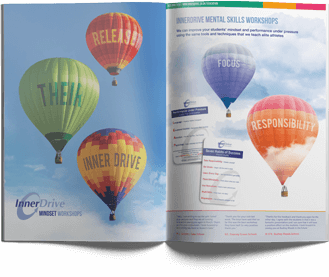After months of ‘classroom’ meaning students’ dining room tables or bedroom desks and a screen, creating a positive classroom culture at school is more important than ever before. Not only will it provide students with a much-needed sense of normalcy, but it’ll also help them reach their full academic potential and ultimately make them feel happier at being in school.
So, what does creating a positive classroom culture entail? Although tricky to define and implement, a positive classroom culture is about ensuring students have a strong desire to learn, feel valued and are more engaged with the actual lesson.
So, how can you boost your classroom culture? Here are 6 strategies you can use…
1. Encourage a sense of belonging
Belongingness Theory explains that human beings have this innate need to belong, which is only enhanced during our adolescent years as we try and figure out who we are at both a personal and social level. Therefore, encouraging a sense of belonging in the classroom can help boost classroom culture by creating a shared identity between students, allowing them to feel valued and accepted by their teacher and peers.
So how do you create a classroom community that all your students feel a part of? Strategies that teachers can use range from team-building activities to improve relationships between students, checking up on each student's progress and well-being individually to greeting students at the door when they arrive at the beginning of a lesson. Not only does creating this community environment develop a strong relationship between you and your students because you show you care but inspires students to look out for each other as well.
2. Have high expectations
Of course, constant disruptions to learning mean that teachers should have some flexibility and understanding that students are going to struggle academically. However, it’s still important that as a teacher, you set high but realistic expectations for your students. Having high expectations, also referred to as the Pygmalion Effect, can positively impact student achievement and progress as they’re more motivated to learn.
On the other hand, if you don’t expect much from your students because of the Covid-19 pandemic this can result in the Golem Effect, which is when having low expectations of your students can lead to them performing worse. As student learning has already taken a hit, teachers must take the view that everyone can improve and students’ efforts should be praised, no matter how small their progress. This helps students develop a growth mindset because they believe they can develop if they put in the hard work.
Having high expectations of your students can also improve teacher-student relationships as you’re emphasising the fact that you believe in them. Since students have mainly seen their teachers through a device recently, many may feel awkward about conversing with their teachers in person. As a result, many may feel hesitant to speak up about what they’re struggling with. So, it’s essential that teachers re-establish that relationship and are clear with their expectations as research highlights that positive student-teacher relationships can boost student engagement.
3. Use humour (selectively)
Using humour is another great way of improving teacher-student relationships, keeping students engaged and making them feel more at home in the classroom. After being out of school for months and not being able to see their friends, students are likely going to be easily distracted by their peers in lessons as they try and catch up on their social lives.
One way teachers can keep students’ attention on lesson material rather than the social element of being in class again is to use humour. This is because research found that over 88% of students felt they paid more attention in class as they were more engaged with the lesson. Students were also more likely to view their teachers as relatable, improving the teacher-student relationship and consequently boosting engagement.
However, make sure that the humour is appropriate and it is probably best to avoid avoid making jokes about the Covid-19 pandemic as we may be unaware of how each or any of the students family lives have been affected.
4. Use group activities
Efforts to contain the spread of Covid-19 has meant that students’ social skills and relationships have taken a huge hit, with one-fifth of Britons reporting that lockdown had negatively impacted their friendship groups and quality. Although students were able to interact online, many students felt that they lacked the emotional connection face-to-face interaction provided them. As stronger friendship support systems are linked to better mental health and reduced stress levels, you should encourage social interaction amongst students.
One strategy teachers can implement into the classroom are group activities as research shows that collaborative learning environments improve not only students’ communication but their academic performance and confidence as well. This could be through class or table discussions, small group tasks, games or an ongoing project in the background. Using group activities, if managed correctly, can allow students to develop a new perspective, review their learning, improve their teamwork skills and learn how to effectively deal with conflict.
5. Have a psychologically safe classroom
A psychologically safe classroom is one where students can make mistakes, embrace their curiosity, and ask questions without the fear of being humiliated. After being out of school for months and being able to ask questions in a written format, sharing ideas and asking questions out loud may be initially uncomfortable for some – especially those students who weren’t very vocal in your online sessions.
And with official reports emphasising that students’ communication and social skills have diminished over time, teachers must create a safe space for students to confidently ask questions without being made to feel stupid. Research suggests that embracing a psychologically safe classroom environment not only improves students’ self-confidence and well-being but their overall academic achievement indirectly as a result. By actively listening to your students and helping them develop a growth mindset to view mistakes as temporary setbacks, your students are going to feel the benefits.
6. Establish a clear routine
Another way teachers can boost their classroom culture is to establish a clear routine so students feel comfortable and understand what is expected of them. After being at home for so long, settling back into the routine of school life is going to take some getting used to. So, by making this transition from home life to school life easier by being consistent with your lesson structure and expectations, students will feel less stressed and overwhelmed about the upcoming months.
FINAL THOUGHTS
Readjusting to classroom life is going to be difficult for students and teachers alike. After being out of the traditional classroom for so long, a strong classroom culture is vital so students feel more comfortable and prepared for the future. This will help ensure they are motivated, engaged and feel supported.
For more tips on how to support students as they return to school, check out our blogs on building up students’ resilience and how retrieval practice may be the key to students ‘catching up’ after lockdown.







